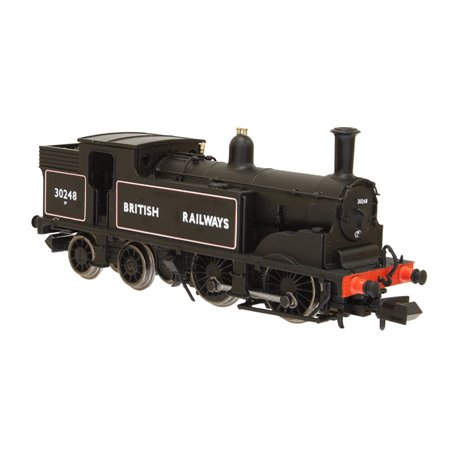No products
Product successfully added to your shopping cart
There are 0 items in your cart. There is 1 item in your cart.
M7 0-4-4 Southern Black 246
2S-016-007
Dapol
M7 0-4-4 Southern Black 246
This product is out of stock
More info
M7 0-4-4 Southern Black 246
- Highly detailed body with many separately added parts
- Expertly applied liveries
- Die-cast wheels
- Die-cast chassis
- Keyed axles (similar to the Dapol N Gauge A4/A3) to prevent quartering slippage
- Improved power path from rear pony wipers improved with contact plates
- 48g in weight giving this little locomotive a very impressive haulage capacity.
- The model is DCC ‘friendly’. A PCB is located in the bunker and pickup and motor connections are terminated on this. It is a simple matter to replace this PCB with a wired ‘micro’ decoder by making 4 solder connections. DC only users do not need to make any changes.
- 3 pole can motor providing smooth slow speed running and a realistic top speed.
History
The LSWR M7 class is a class of 0-4-4 passenger tank locomotive built between 1897 and 1911. Drummond designed the class for use on the intensive London network of the London and South Western Railway (LSWR), the locomotive proved to be well suited to such tasks. Because of their utility, 105 were built, 95 being built at Nine Elms Works with the remaining ten being built at Eastleigh Works. The class went through several modifications over five production batches. For this reason, there were detail variations such as frame length. Many of the class were fitted for push-pull operations, that enabled efficient use on branch line duties.
Under LSWR and Southern Railway ownership they had been successful suburban passenger engines, although with the increased availability of newer, standard designs, many of the class were diagrammed to take on a new role as reliable branch line engines, especially in Southern England.
Many of the class also entered service with British railways. With members of the class lasting in service until 1964 Two examples have survived into preservation: number 245 in the National Railway Museum, and 53 (as BR 30053) on the Swanage Railway. The rest of the class were scrapped. One locomotive was withdrawn in 1937, one in 1938 and the remainder being withdrawn between 1957 and 1965.




